
Spielberg Basically Created An Entirely New Dinosaur With The Velociraptors
[ranking: 1]
The velociraptor stands as possibly the most famous dinosaur in the Jurassic Park franchise. From terrorizing kids in the classic kitchen scene to becoming Chris Pratt's BFF's in Jurassic World, the raptors go through enough character developments that some executive probably proposed a raptor spin-off called Jurassic Park: Enter the Dino.
Sadly, pretty much all of Spielberg's ideas about the raptor hold little to no scientific ground. Velociraptors grew to be about the size of a turkey, weighing in around 30 pounds. Continuing with the avian themes, the raptors should appear to be more bird-like and sport some feathers. And though they ate meat, they were not ferocious killers. At 30 pounds and the size of a turkey, the raptor would not live up to the agility they display in the films. Their top speed likely clocked in around 40 miles per hour - still fast, but not fast enough to be racing alongside Chris Pratt and his motorcycle.
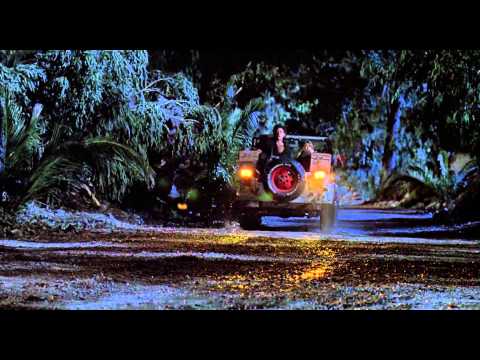
The T. Rex Could Never Chase You
[ranking: 2]
One new detail in particular makes the T. rex much less terrifying... and makes the Jurassic movies even more ridiculous. According to science, if the T. rex ran as quickly as it does in the movies, it legs would break under its body weight. Not cool, bro, especially since those stubby arms would never break a fall either.
Scientists with nothing better to do used some fancy computer modeling to discover "that true running gaits would probably lead to unacceptably high skeletal loads in T. rex." So, instead of traipsing around at 45 miles an hour, the T. rex likely ran around a speed of five-to-15 miles per hour. You could have escaped!

You Can't Get Dinosaur DNA From A Mosquito
[ranking: 3]
The conditions needed for scientists to clone dinosaurs require more than just a piece of amber and Richard Attenborough's sheer willpower. The mosquito would have to be female and consume a ton of blood, only to immediately be encased in tree sap following its feeding. Even if DNA gets perfectly preserved, extracting an uncompromised DNA sample stands as a nearly impossible task. Furthermore, the insects used in the film arose well after the dinosaurs become extinct.
In 2017, scientists came somewhat close to a real-life Jurassic Park experience when they found a tick preserved in amber - along with a feather. Though this sounds like the beginnings of a possible theme park, the reality is far from it. Scientists can't even tell what kind of dinosaur the tick fed on, only that it was a dinosaur because the amber dates to the mid-Cretaceous period. Unfortunately for your dreams but fortunately for humanity's safety, the tick failed to produce the DNA needed to clone a real dinosaur.
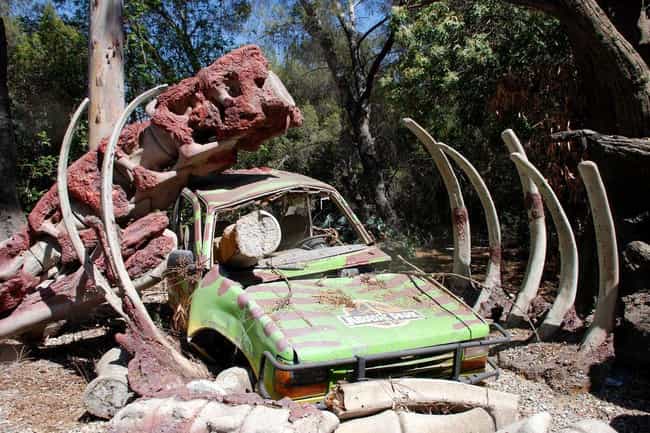
So What Does 'Jurassic Park' Get Right?
[ranking: 4]
Before this list turns you against Jurassic Park, be sure to give credit where credit is due. For all their errors, the movies got a few things right. For one, the dinosaur eggs shown in the movies resemble eggs discovered by actual paleontologists. The cannibalism depicted in the movies is also accurate; thanks to fossil records, experts know dinosaurs of the same species fought with and killed each other. Though people will probably never know if dinosaurs talked to each other, it's likely that they did. Considering that birds are dinosaurs' closest living relatives, one can hazard a guess that dinos, like birds, lived as vocal creatures.
Furthermore, experts do want to use genetics to potentially create new dinosaurs, but instead of using preserved DNA, they want to manipulate the genes of the dinosaur's ancestors like chickens to create a "chickenosaurus." Sounds like a great idea.

Dilophosaurus Exhibited Abilities It Likely Never Possessed
[ranking: 5]
As exciting as a venom-spitting dinosaur sounds, no one knows if the dilophosaurus actually spit any venom. Being 20 feet long, the dinosaur probably killed prey easily enough without venom. As for the frilly neck that looked like a bizarre version of an Elizabethan collar - again, it grew to be 20 feet long, so it's not like it needed to appear bigger or scarier.
However, the dilophosaurus did hail from the Jurassic period, so at least the producers nailed that part.
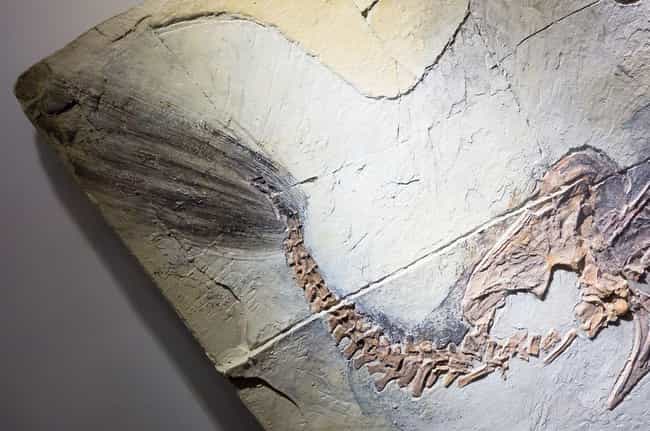
All The Dinos Are Missing A Key Feature: Feathers
[ranking: 6]
A noticeable problem in all of the Jurassic movies would be that none of the dinosaurs are shown with feathers. Recent evidence excavated in Siberia suggests all dinosaurs, not just some, sported feathers. A two-legged dinosaur fossil dating back to 160 million years ago in the Jurassic period indicates that feathers existed in more than just avian-like/winged dinosaurs; it's more likely that feathers existed much longer than previously thought. The fossils turned up in what used to be a lake bed; ash from volcanic eruptions preserved their skeletons as well as their feathers.
To be fair, the Siberian fossil turned up two decades after the first film, so this gaffe can slide a little bit.

Brachiosaurs Didn't Sneeze
[ranking: 7]
Brachiaosaurs do not stand up on their back legs like a dog begging for a treat. As adorable as this scene looks, the top-heavy dino would likely topple over if it tried. These huge dinosaurs (to the tune of 62 tons and at least 82 feet long) would never climb hills, let alone stand up to eat. When you stand as tall as a four-story building, you don't need to stand on your hind legs.
Also, let's talk about the sneezing for a sec. Sauropods probably did not sneeze, as the pressure could make their heads explode after it traveled up that four-story neck. Definitely a sad thought, but maybe one worth incorporating into the next film.

The Triceratops Poop Was Not Realistic
[ranking: 8]
Before Laura Dern became classy as all hell in Big Little Lies, she dug through Triceratops poop in Jurassic Park. Talk about coming a long way, huh folks?
However, the pile of poop is big, like the size of the dinosaur itself. Despite Ellie Satler's willingness to plunge her arm into poop, a true expert knows this prehistoric feces are a pile of BS. If you want to see what prehistoric poop really looked like, check out some pictures of coprolites (the fancy name for fossilized crap) here. Sadly, no coprolites ever matched the size of dinosaurs.
One of the original producers, however, tells debunkers to "get a life." The guy has a point.
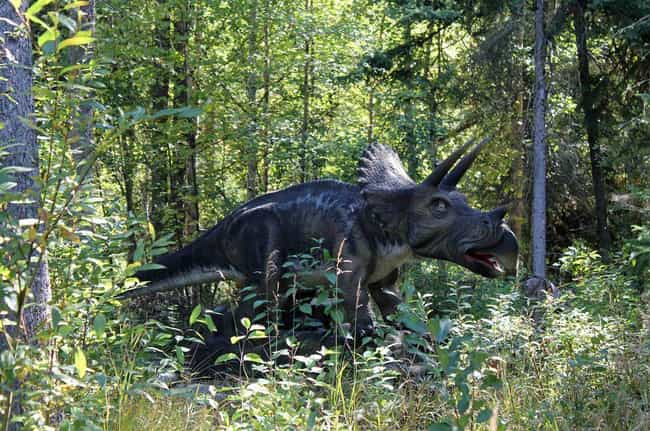
The Time Periods Were Kinda Messed Up...To The Tune Of Millions Of Years
[ranking: 9]
Among the most basic things any of the Jurassic movies could accurately portray would be dinosaurs from the correct time periods. But alas, such dedication to the facts would screw up the producers' storyboard. Stegosaurus and Triceratops, for example, never lived in the same time period; the Triceratops lived around 65 million years ago during the Cretaceous period, while the Stegosaurus lived around 150 million years ago (which was actually in the Jurassic period, so points for that).
Particularly interesting, and neglected in the movies, is that the Stegosaurus - despite being 30 feet long - would have had a bite weaker than yours. It actually used its cheeks to store food, like a very, very, very big, armored hamster.
Clearly, the difference between 65 million years and 150 million years is a solid 85 million years, so these two massive beats would have never crossed paths.
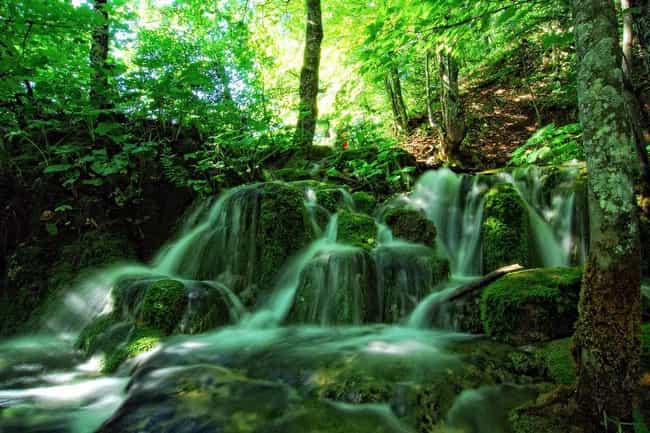
Where Did The Plants Come From?
[ranking: 10]
If you're willing to swallow that the Jurassic Park team cloned dinosaurs, you then need to ask yourself: where did the plants come from? Even today, is anyone cloning plants? Well, it turns out cloning plants from the Jurassic era (or any era) makes for a basically impossible task. Though fossils of plants exist, they are either imprints of plants or fossils with minerals in place of actual tissue.
That being said, certain trees and plants still exist today that likely thrived around at the same time dinosaurs roamed the earth, as evidenced by the petrified trees in Arizona. So, in the event someone managed to clone a dinosaur, people could probably populate the theme park in a way that would be to their liking.
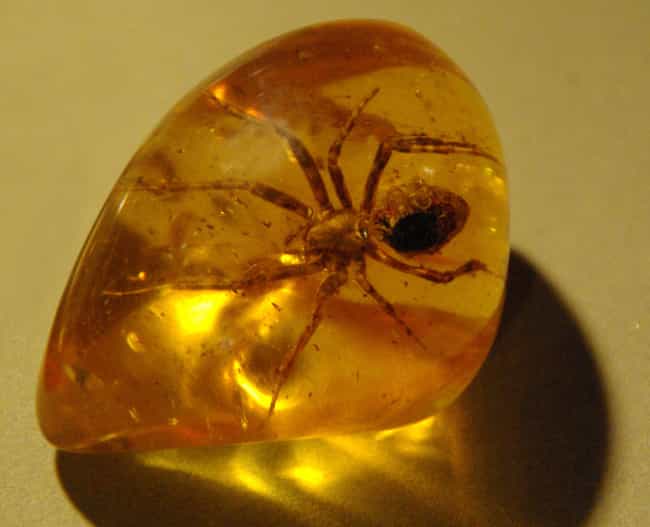
The Proper Amber Would Not Turn Up In The Dominican Republic
[ranking: 11]
The Dominican Republic does produce amber fossils, but not the kind necessary to clone dinosaurs from it (usually). However, after the release of the first Jurassic Park movie, sales of amber from the Dominican Republican increased by a whopping 500%. This prompted a healthy counterfeit market that the country, particularly for pieces that have preserved insects. Nearly all of the amber dates from 15 million years at the young side to 40 million years on the old side. Considering that dinosaurs roamed Earth around 65-230 million years ago, it's pretty unlikely any of the amber would have dinosaur DNA.
The oldest insect found preserved in amber in the DR - a spider - dates back to about 130 million years ago, earning it a spot in the Guinness Book of World Records. However, this is clearly the exception, not the rule.
New Random Display Show all by ranking(12 items)









